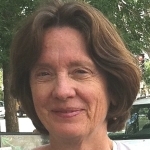 (Host) Commentator Cyndy Bittinger is a teacher, writer and historian
(Host) Commentator Cyndy Bittinger is a teacher, writer and historian
who’s been researching Native American history in Vermont. She says that
for Native Americans who know their history – especially concerning
events that followed early contact with European settlers – Memorial Day
has complex meaning.
(Bittinger)
During the North American wars of the 18th century, Native Americans
were forced to take sides among three warring factions: the French, the
British and American rebels. Some fought with Ethan Allen in the
American Revolutionary War in return for the promise of blankets and
weapons. Yet others fought against him because they opposed the
encroachment of non-native settlers in what we now call Vermont.
Joseph
Susapp is remembered in Newbury with a gravestone inscribed with the
complimentary words, "the friendly Indian guide" and his death date of
1819. He was a Micmac adopted by the Abenakis who scouted for Col.
Jacob Bayley during the American Revolutionary War and helped build the
Bayley-Hazen Military Road that began in Newbury and ran north up to the
Canadian border. Susapp later received grants from the state of Vermont
and his grave is marked with a flag on Memorial Day.
William
Apess was a Pequot, raised in Massachusetts and Connecticut, but his
enlistment in the militia to fight for the Americans in the War of 1812
brought him to camp on the shores of Lake Champlain with about five
thousand other men. They won the Battle of Lake Champlain against the
British. That should have brought Apess the distinction of military
recognition, but he became an outspoken critic of American policies. He led a peaceful
protest in Mashpee, Massachusetts in support of the Wampanoags’ desire
to return to home rule. His preaching and writings brought him
considerable attention. In 1836 he gave a major speech on the
mistreatment of his people at the Odeon theater in Boston.
Gradually,
most Vermont natives retreated to Canada, but reappeared here from time
to time. From 1798 to 1874, they repeatedly presented their claims of
land to the Vermont legislature and were repeatedly denied. In 1835,
fifteen Abenaki encamped in Windsor en route to taking a young man to
Dartmouth College to study. The college had been founded to teach
Indians and President Eleazar Wheelock sought out Natives, but many were
reluctant to enroll where they would learn to farm and speak in the
English tongue. The historical record doesn’t tell us how the young man
fared at Dartmouth, but Wheelock and subsequent presidents eventually
shifted focus away from native youth, since they too often returned to
native customs and beliefs. Samson Occom was the rare exception, a student of Wheelock’s who
became a missionary and organized the first Presbyterian Church
congregation begun by Native Americans without outside assistance.
During
the Civil War, more than three thousand Natives fought on the Union
side. For example, the first Vermont Calvalry Regiment included four
Mohawks who enlisted in Alburg.
Ely S. Parker was a native from
New York State who served as General Grant’s adjutant and in 1865
drafted surrender terms to conclude the Civil War. When this full
blooded Seneca walked into the room at the Appomattox courthouse,
General Lee of the Confederate Army, quipped, "I’m glad to see one Real
American here." Parker replied, "We are all Americans, sir."